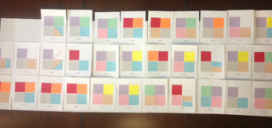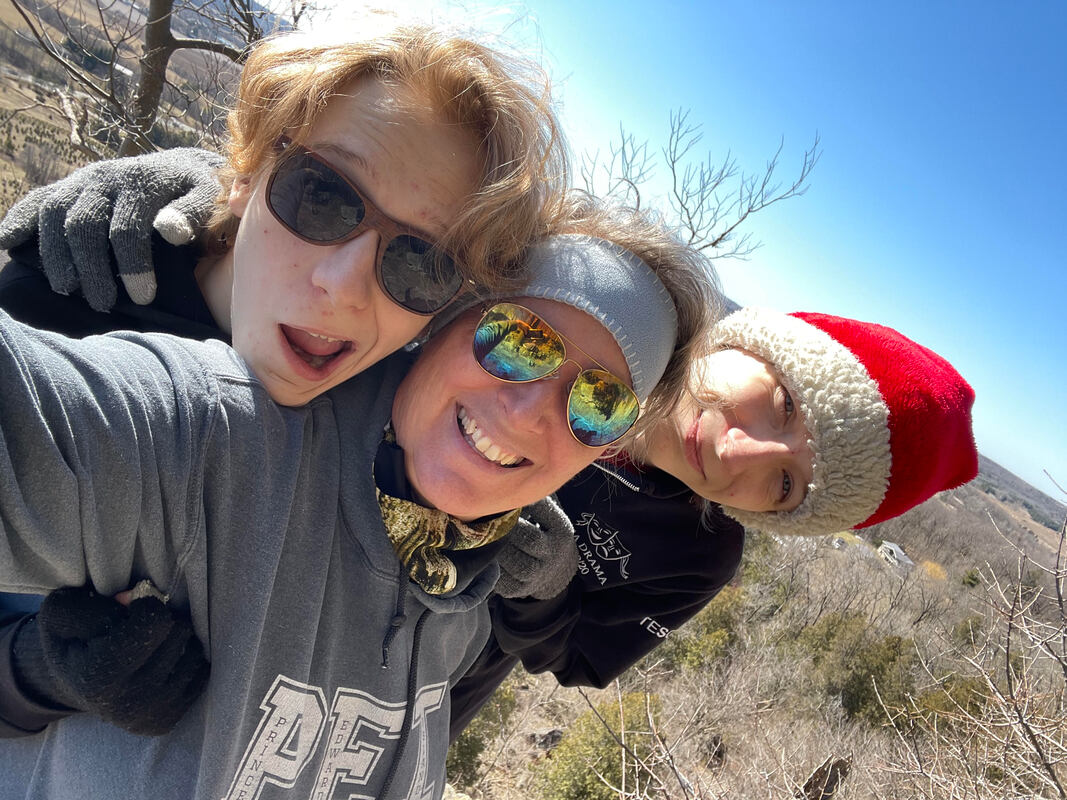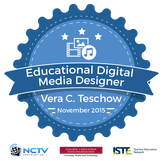
An activity I learned about way back in teachers’ college myself, the glyph presented in this session was considerably more open ended in that it allowed one to easily cluster people by colour. A 4-square was distributed, along with a collection of pre-cut coloured squares with which to fill in the 4-square, according to a pre-determined legend or key. (In this case, a certain colour went into the upper left hand corner depending on which of the four provinces participants were from, and another colour in a different corner determined which division we most often taught in, and so on.)
Another idea I had not considered, though I’d often used “bioglyphs” as a start-of year activity with my students, is that the glyphs can be left up for a longer period of time and then referred to when teaching a host of math concepts beyond data, such as fractions and percents and having students write their own mathematical problems to solve, based on data represented in the sample posted in the room!
4 Corners
An organizer I have often used in my own room is 4 corners, and I was pleased to see it demonstrated here. Four images or signs are posted up in the corners of the room (I have used 6 corners before, too, for more distribution, if I have a larger class), and students are invited to go to the corner which they feel best represents their response to particular question, and then have a conversation with others in that corner.
For example, students might flock to a particular photo that best represents to them the key concepts in a recently completed unit of study. Or signs in the corners might read “strongly agree”, “agree”, “disagree” and “strongly disagree”; students would be asked to consider where they stand on an issue and why, then go to that corner and have a conversation with others at that corner to develop an argument for or against a particular position.
Quiz-Quiz-Trade
This one’s a great review tactic for auditory learners and extroverts, but allows people to just speak with one partner at a time, so it's not too high stress even for the introverts in the room. Everyone gets a different question, makes eye contact with a partner, then meets that partner and reads their question aloud for the partner to respond to. After “quizzing” one another, the partners trade cards, and go off to find another partner.
Even if they connect with the same partner later on, they will have different cards by then, so this activity really is quite versatile. One thought I had, too, was that students could write the quiz questions themselves towards the end of a unit, in order to consolidate individual and collective understanding. (And clarify any misunderstandings; students will be only to happy to correct one another if they disagree on a particular response!)
This activity also provides a great opportunity for “get to know you” questions at the beginning of the school year, or after a long break.
My own thought was to use opinion-based questions, as a warm up for a “point of view” unit, but ensure that students paraphrase what their partners say before trading cards and moving on to a new partner, so that they really practise active listening!


 RSS Feed
RSS Feed